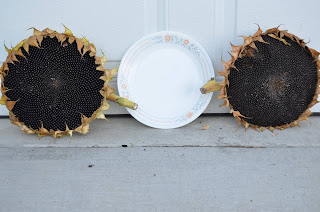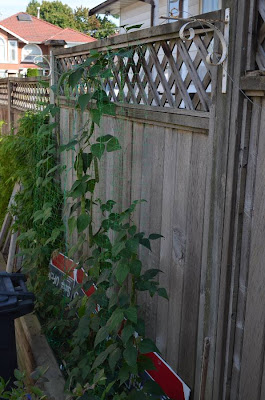The secret in tastes and colors of healthy food.
There is wisdom in the old saying “You are what you eat”. The nutritious the food we eat the better the health will be.
Six tastes of healthy food.
It
is a paradox; we Indians don't give much importance to Ayurveda, which is
originated in India. Around 1500 BC, Ayurveda's fundamental principles got
organized and enunciated. People from various countries came to Indian
Ayurvedic schools to study. Learned men from Rome, Greece, China, Egypt, Tibet,
Persia travelled to India to learn the wisdom and taken that knowledge back to
their countries.
 Most of us know Ayurveda as means of healing. But more than that, it is a way of living to prevent illness. Prevention is better than cure. Ayurveda is the art of daily living in harmony with the laws of nature. It is the ancient wisdom on health and healing: a science of life. It deals with both prevention and healing. According to Ayurveda all food can be categorized in to six basic tastes. All six tastes have to be consumed daily to get a balanced diet for a healthy living. Six different tastes represent all the nutritious food for healthy living.
Most of us know Ayurveda as means of healing. But more than that, it is a way of living to prevent illness. Prevention is better than cure. Ayurveda is the art of daily living in harmony with the laws of nature. It is the ancient wisdom on health and healing: a science of life. It deals with both prevention and healing. According to Ayurveda all food can be categorized in to six basic tastes. All six tastes have to be consumed daily to get a balanced diet for a healthy living. Six different tastes represent all the nutritious food for healthy living.
|
Tastes
|
Food that contain the tastes
|
1
|
Sweet
|
Tubers and grains. Potatoes, yam, Sweet potatoes, tapioca, carrots, rice, wheat ,barley, peaches, melon
|
2
|
Salty
|
Salt- table salt, sea salt, rock salt
|
3
|
Sour
|
Yoghurt, tomato, vinegar, cheese, green grapes, lemon and citrus fruits, tamarind, fermented soybean paste, wine.
|
4
|
Bitter
|
Fenugreek, bitter gourd, turmeric root, greens such as romaine lettuce, chard, kale, amla (gooseberry)etc.
|
5
|
Pungent- hot
|
Chilly, pepper, radish
|
6
|
Astringent
|
Unripe banana, cranberries, pomegranate, okra, beans, parsley, saffron, basil
|
The problem of today is that we mainly eat food with the first three tastes only- sweet, salty and sour; mainly sweet. This makes an imbalance in the nutrient content and body's requirements. All grains like rice, wheat, tubers like potatoes, tapioca sugar contains starch, which is categorized as sweet. We get more of carbohydrates and less of other nutrients, vitamins and minerals. We encourage our children not to try bitter, hot and astringent tastes. So they don’t get enough nutrients and at the same time they eat more starch. Our parents and grandparents ate all the six tastes. Most of them lived long without much diseases. We are overfed, undernourished and over stressed. Our body cells are starving for nutrients leading to a shocking increase in the incidence of degenerative diseases especially diabetes and cancer. The present generation starts treatment for the common multiple illness like diabetes, BP etc. around the age of 50. Our next generation if not properly taken care of, may start regular medicines at the age of 35. Is it progression or regression?
 |
| All the colours in vegetables. |
Chinese scholar Hu Sihui, in his book “Principles of Correct diet” suggests five tastes.
“What determines human life is mind, which is the master of the body. If the body is at ease and in harmony with its environment, the mind will be able to deal with all changes of life. Thus it is important to keep the body in good repair and maintenance, the essence of which is to keep the golden mean. This is not to be deficient in nutrition and not indulge in excesses. Use the five tastes (saltiness, sweetness, sourness, bitterness, pungency) to temper the five vital organs. If these are at peace, the vital fluid in us will flow smoothly, then our mind will find its equilibrium, and the whole person will find himself in a state of supreme well-being.”
Hu Sihui, Principles of correct Diet- 1330
 |
| Tomatoes- different colors-different tastes.and nutrients. |
Is our food naturally colourful or artificially coloured?
The modern nutritionists suggest a diet program that contains food rich in natural colors: the rainbow food. This is the same wisdom of Ayurveda.
The greater the naturally colorful food we eat, greater the likelihood that we will receive a rich diversity of nutrients. The world’s healthiest foods are naturally colorful. The rich phytonutrients provide them with the colors. These phytonutrients are anti-oxidants and, anti-inflammatory that helps to reduce aging and increase immunity.
These phytonutrients give carrots and squash their rich orange- red color, make orange the orange color, make beets a red and provide green to leafy vegetables like kale and chard green. Imagine the different colors of fruits. Enjoy the food in colors enjoy the life in a healthy way.
Radiant red- tomatoes, papaya, watermelon, pink grape fruit, pink and red guava etc. are rich in lycopene, a carotenoid, with powerful antioxidants properties that may help your heart healthy and may protect against cancer. To absorb lycopene from tomatoes add little oil with it.
Vivid yellow & orange- pumpkin, carrot, orange, mangoes, sweet potatoes, cantaloupe, peach, squash, apricot etc contains beta carotene that is coveted to vitamin A . Vitamin A is an antioxidant, essential for your skin, bones and teeth.
Bright purple- red cabbage, blueberries, raspberries, blackberry, black currants, plums, red cranberries, concord grapes which contains anthocyanin, which acts like antioxidants to protect cells from damage. It may help brain function and protect your heart.
Green- Kale, Swiss chard, broccoli, spinach, collard greens, Malabar spinach, cabbage etc. contain chlorophyll which may detoxify the body. They are rich in vitamins, antioxidants, and minerals such as iron, calcium, potassium and magnesium.
The processed food is added with artificial colors, processed by mechanical processing, and genetically engineered that have very less nutritional value.
Do you like to have a naturally colorful vibrant food or artificially colored food? Your choice determines your health. Be your own light.
 |
Different colours -rice
Rice- #1US style parboiled,# 2 &3 is rice with full bran ,# 4 Palakadan Matta boiled #5 Basmati. #3 Is Wild rice, most expensive rice. The best rice is one with full bran. Bran contains vitamins and minerals. |
 |
| Rice- all with bran |





















